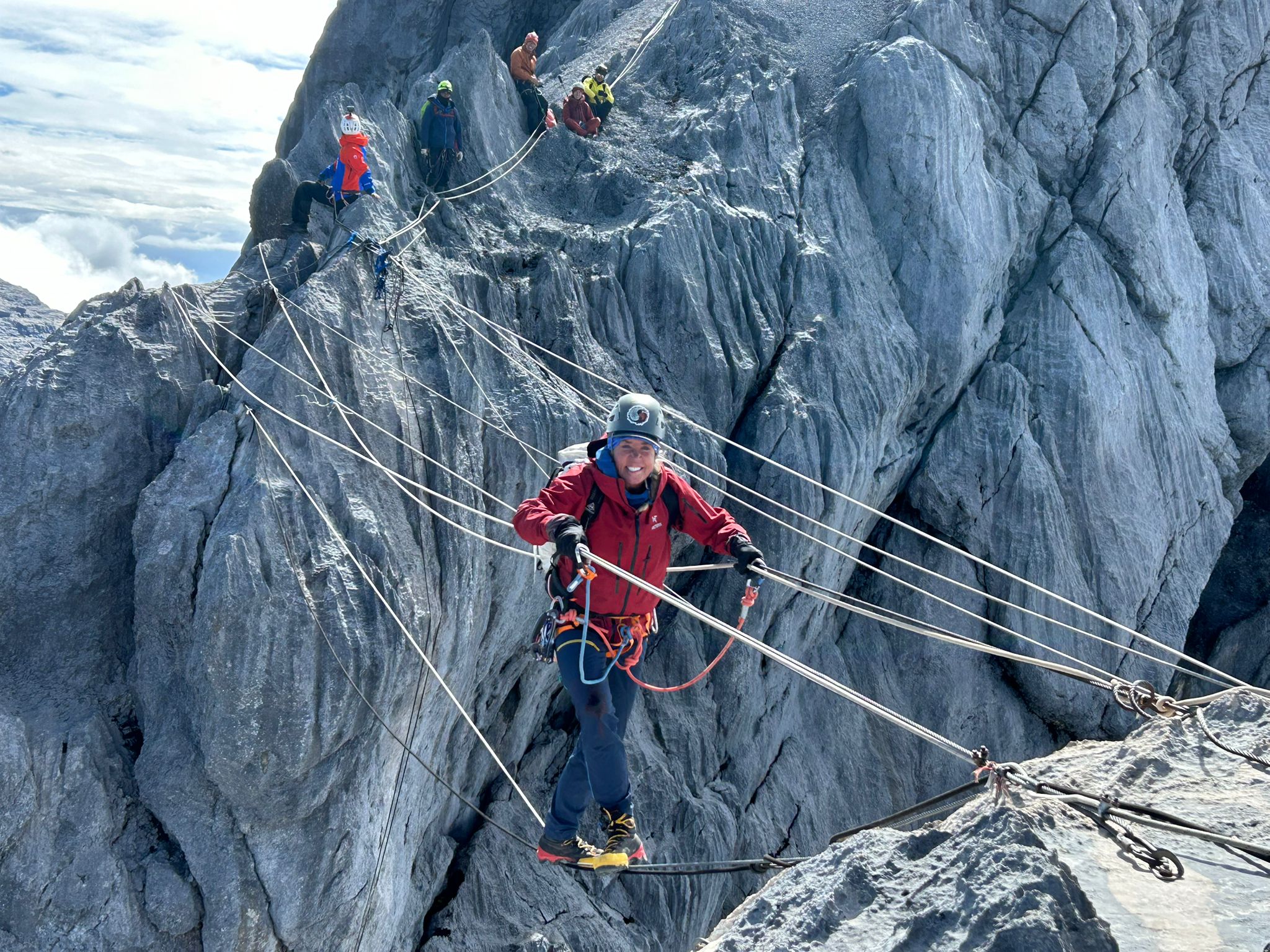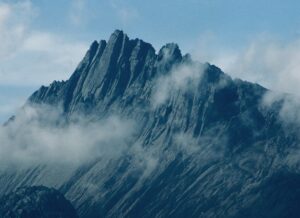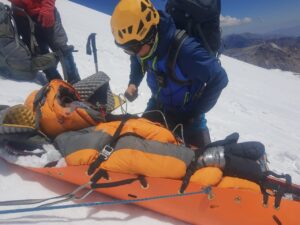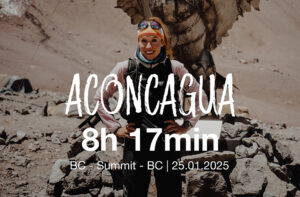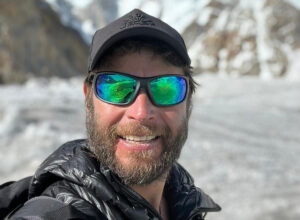Carstensz Pyramid, the lowest and least-known of the Seven Summits, attracts an increasing number of those hoping to climb the highest peak of Oceania. At the same time, accidents are also increasing. Here’s a detailed guide from base to summit by international expedition guide Mike Hamill.
Lying on the island of New Guinea, Carstensz Pyramid is, at 4,884m, the highest peak in Oceania. Oceania is considered the seventh continent by some listers. Other Seven Summiters give that distinction to Australia, and so instead do Mount Kosciuszko, an easy 2,228m walkup. Carstensz is a rock climb, and what it lacks in altitude, it makes up for in technical challenge. It is the “climbiest” of the Seven Summits.
Puncak Jaya
Carstensz, named after Dutch seafarer John Carstensz, is also called Puncak Jaya, a name given by Indonesian communists that means the Peak of Victory. Both names are currently in use.
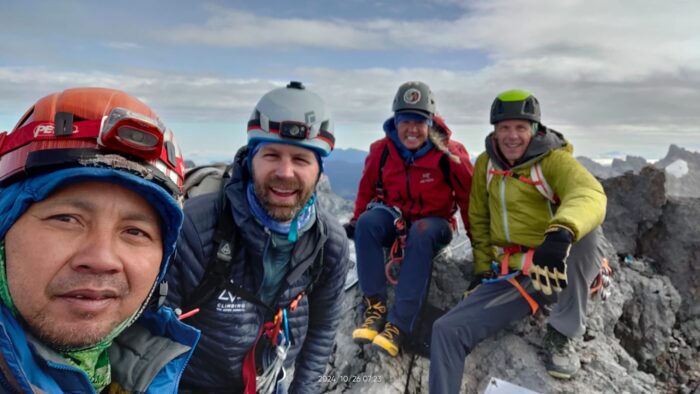
Mike Hamill, second from the left, on the summit of Carstensz with other team members. Photo: CT7S
The peak is located in the central highlands on the west side of Papua Island and is part of the Snow Mountains (Pegunungan Maoke) range. Carstensz Pyramid is the highest mountain between America and the Himalaya, pipping the volcano Klyuchevskaya Sopka in Kamchatka, Russia by just 130m.
Don’t underestimate
Carstensz Pyramid includes not only technical passages but an intermittently hostile climate. Summit day requires previous acclimatization, a good mindset to deal with strict deadlines and sudden bad weather, sufficient climbing skills, and a responsible guide. The latest accidents on the mountain, in which one climber fell to his death last fall and two women died of hypothermia recently, are a sobering reminder of the peak’s seriousness.
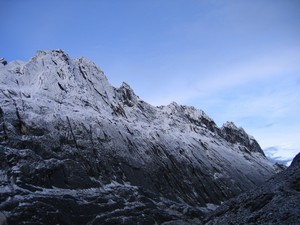
The upper sections of Carstensz Pyramid. Photo: Carstensz Papua
Political complexities
Carstensz can be climbed at any time of the year, but most expeditions prefer the “drier” months of February through November. Even here, though, expect heavy rain in the afternoons year round.
“Don’t underestimate the cold that comes with altitude on Carstensz, despite its tropical location,” Mike Hamill warns.
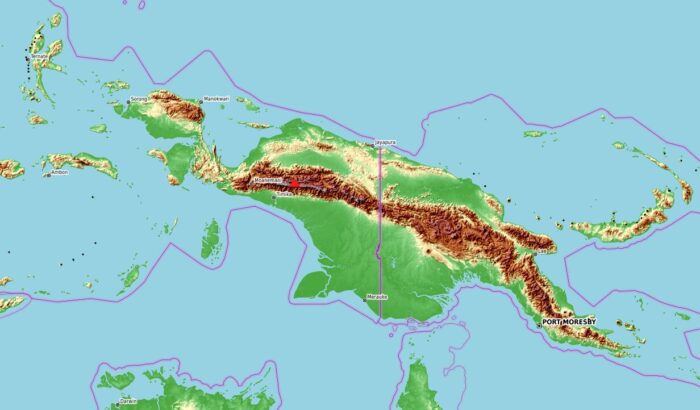
Carstensz Pyramid lies on Papua, west of the island of Papua-New Guinea, Indonesia. OpenStreetmaps
The peak was closed to foreign expeditions for years due to political unrest and the COVID pandemic. It only reopened in September-October 2024 for a brief period.
“There are no guarantees it will stay open, and it is best to take advantage of any present opportunities to climb the peak, as the situation is in flux,” says Hamill.
Climbers should understand this is a deeply complicated area, not only because permits are convoluted and need to be granted by multiple authorities, including regional municipalities, the police and the military, but because there is deep civil unrest in the region with frequent violent skirmishes between Papuan rebels, who seek independence from Indonesia…[There are also] security concerns around the Grasberg mine, which has one of the largest reserves of gold and copper in the world.
Hamill cautions that local outfitters engage in much politicking, jockeying, corruption, and sabotage to exert control over this lucrative industry.
“This has caused problems for foreign companies who need to work with local suppliers to run reliable and safe expeditions,” he says.
Better fly
Flying to base camp in the helicopter is the best and safest way to approach the mountain.
“No foreigner that I know of has trekked to the mountain for many years because of the unrest and the need to pass over land owned by the Grasberg mine,” he noted. “Several foreign hostages have been taken by Papuan rebels over the past few years in adjacent regions. I think it is neither safe nor appropriate to trek at this time.”
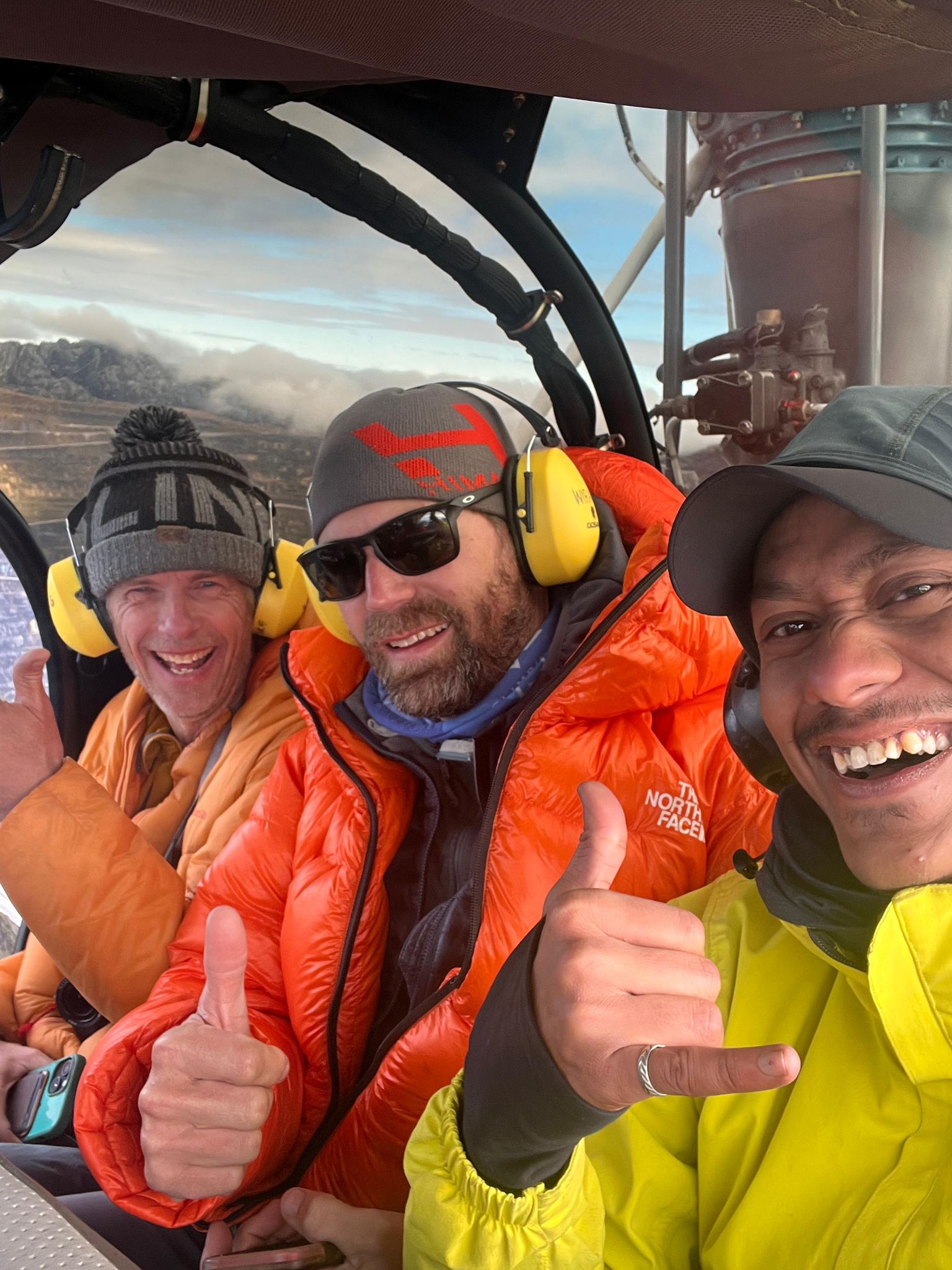
Climbers fly to Base Camp for safety reasons. Mike Hamill is in the middle. Photo: CT7S
Those used to champagne and big tents in places like Everest should assume that simple adventure will prevail over luxury here.
“Everything at the base camp is brought in by helicopter, so it is fairly basic and not as luxurious as some of the other Seven Summits’ base camps,” says Hamill. “Everyone sleeps in tents and dines in simple dome tents.”
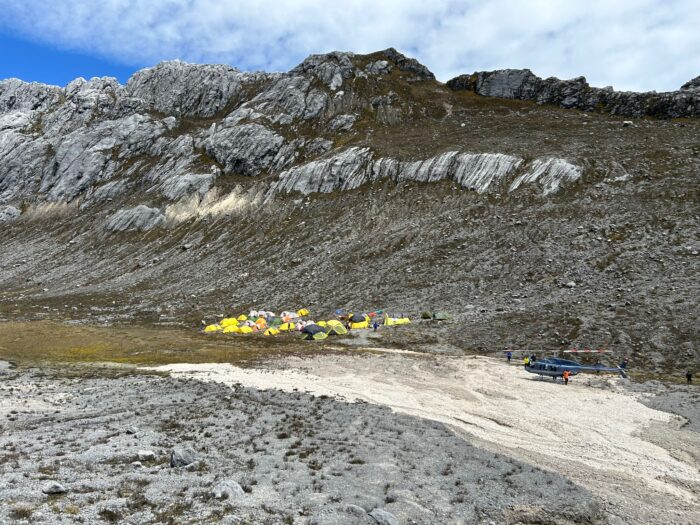
Base Camp. Photo: CT7S
Teams typically acclimatize for a few days around base camp before the summit push. This is done in one long, exposed day from base camp to the top and back again. It’s typically 6 to 10 hours up and about half that back down.
Climbers can spend anywhere from two days to over a week acclimatizing at base camp. Some of those days depend on the weather and when the helicopter can fly. Delays should be expected.
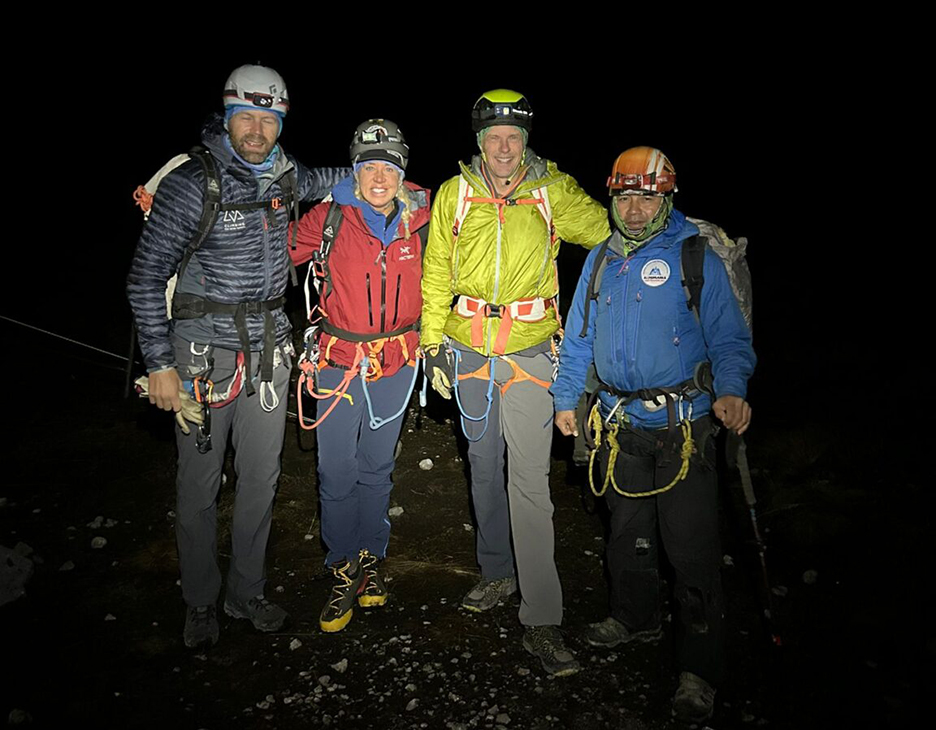
About to leave for the summit. Photo: CT7S
The climb
The route up Carstensz Pyramid is steep and not easy to navigate.
“It ascends rock and scree terraces that bisect the massive rock face that leads to the summit,” Hamill explains.
The route is fixed with climbing ropes that climbers use to ascend the steep faces. The rock is very sharp, and rock fall is somewhat common. There are several rope bridges over exposed areas and steep, airy sections that climbers must navigate once on the summit ridge.
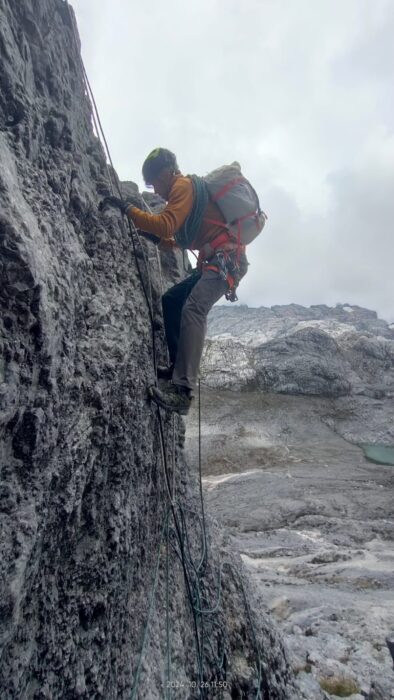
At one of the most technical sections. Photo: CT7S
Climbers should be familiar with going up fixed lines, using harnesses and knots and hitches, and they need to be very fit. Summit day is a big day at altitude. Without training specifically for the ascent, climbers will struggle. They need to feel comfortable on vertical terrain with lots of exposure. There is typically no snow or ice on Carstensz, so familiarity with crampons and ice axes is not needed, but climbers should have previous rock climbing experience.
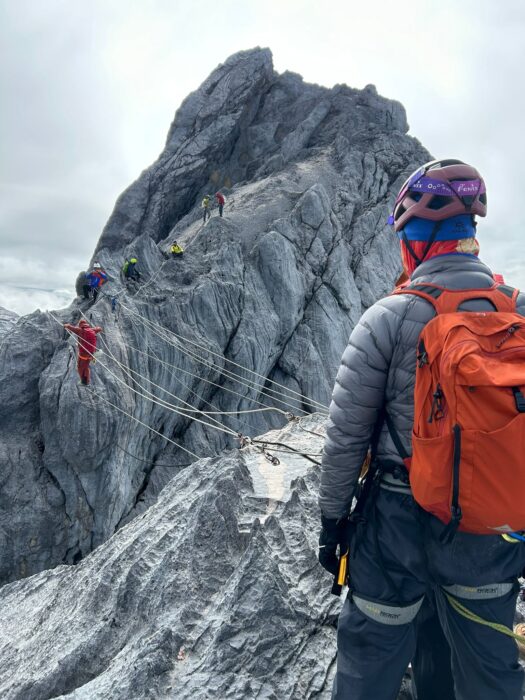
A traverse on Carstensz Pyramid. Photo: CT7S
Hamill also states that Carstensz is potentially dangerous.
“There have been several deaths associated with local Indonesian companies in the past six months since the mountain reopened, so make sure you research the company you are climbing with and trust their leadership and support,” says Hamill.
Insider tips
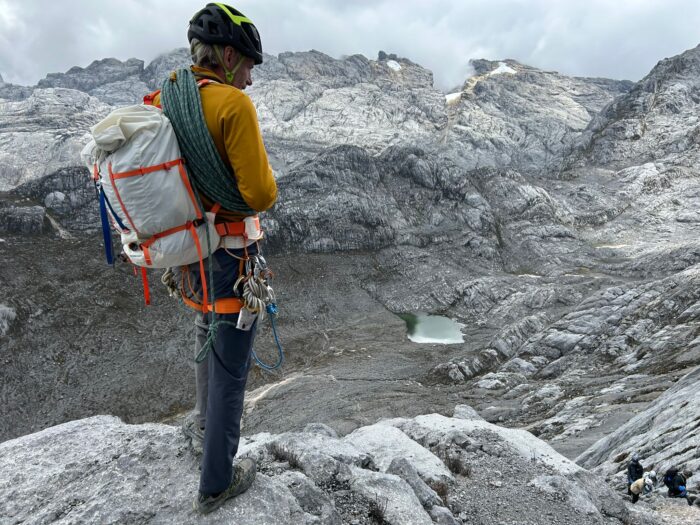
Photo: CT7S
- Bring several pairs of gloves, as rain is common and gloves can get very wet and cold. It’s nice to have changes to keep your hands warm.
- Rain is the norm, not the exception. Expect it, and plan on delays flying in and out of the mountain because of the weather. Bring several changes of clothes, and rainproof shells are a must. Carry layers with you on the helicopter so you don’t get separated from the crucial warm gear you need to survive.
- It is a big jump in altitude from Timika to base camp so if climbers have a chance to pre-acclimatize in a hypoxic tent at home, it will improve the experience and allow them to feel better at base camp and on the climb.
- Keep your wits about you. Stay focused and keep a low profile. Hamill advises against leaving the hotel in Timika or drawing unnecessary attention to yourself. You are in a deeply conservative country and need to behave respectfully.
- Expect the unexpected and be willing to roll with the punches. This is true adventure travel. Nothing can be guaranteed, and there are forces at play in this region that are beyond anyone’s control. Work with trusted guides and be conservative with your safety.
- Travel through Bali before or after for a relaxing retreat. Great food, beautiful beaches, surf and massages!
